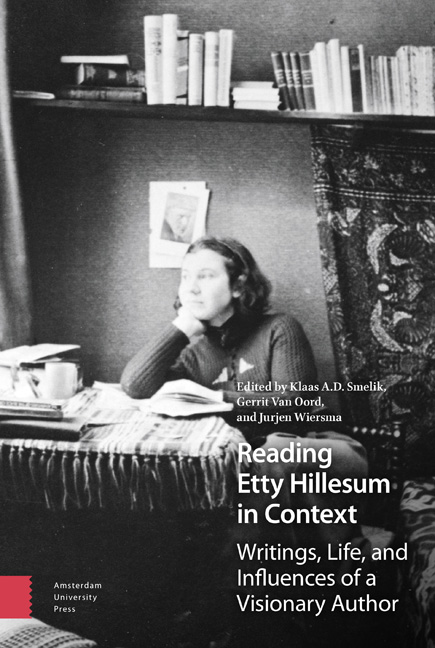Introduction
Published online by Cambridge University Press: 06 January 2021
Summary
After the publication of Het Verstoorde Leven [An Interrupted Life] in 1981, scholars around the world evinced a keen interest in the writings of Etty Hillesum. That volume – the first compilation of sections of Etty Hillesum's diaries and letters – gave rise to an extensive examination of Hillesum's written legacy. Her work became a distinct field of international research within the Humanities, and a new domain in the field of Holocaust studies. Academic interest in Etty Hillesum's work was internationalized in a significantly short time span. By 1988, the first international seminar on Etty Hillesum was held, not in the Netherlands where she was born, but rather in Rome, demonstrating the breadth of her appeal.
In the early days, researchers had no other resource for their work but Het Verstoorde Leven, in the original Dutch version, or in translation. This had a rather unfavourable impact on the quality of research, since the diary entries and letters selected for that book gave a distorted view of Etty Hillesum and her writings. A complete, academic edition was in order. This task fell to Klaas A.D. Smelik and his staff at the Etty Hillesum Foundation in Amsterdam, which published the first edition of Hillesum's complete works in 1986.
The objective in publishing the critical 1986 edition was to offer a text that would form a solid basis for further research. It is extremely important, therefore, that English, French, and Italian translations of the complete edition, including all annotations, have become available since – while a German edition is in preparation.
Still, it has remained difficult for scholars who do not know Dutch to investigate Etty Hillesum's writings. Many of the existing translations are imprecise, and the English rendering is considered particularly weak. In response, in 2014, the Etty Hillesum Research Centre published a new, bilingual edition of Hillesum's diaries and letters (Dutch-English), to enable non-Dutch scholars to consult the original texts with far greater ease and to extract meaning with greater precision.
Standing apart from Hillesum's own work, however, yet nevertheless of great potential interest to scholars, are important studies on Etty Hillesum written in Dutch, and thus inaccessible to non-Dutch speakers. One might mention, for example, Piet Schrijvers’ essay, “Etty Hillesum in joodse contexten” [Etty Hillesum in Jewish Contexts], which was published in Dutch in 2003.
- Type
- Chapter
- Information
- Reading Etty Hillesum in ContextWritings, Life, and Influences of a Visionary Author, pp. 11 - 22Publisher: Amsterdam University PressPrint publication year: 2018

